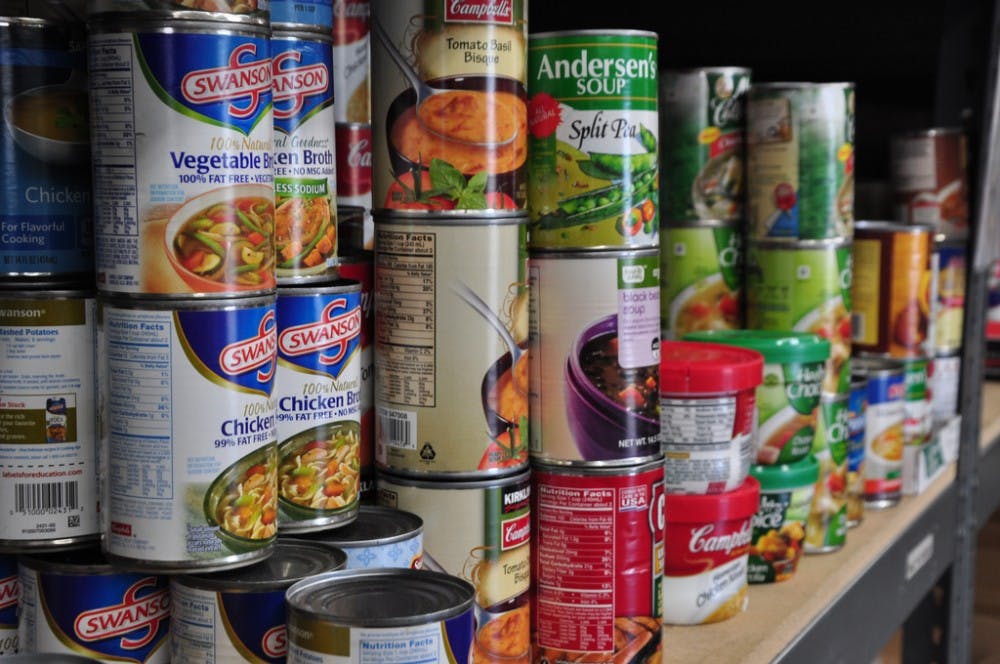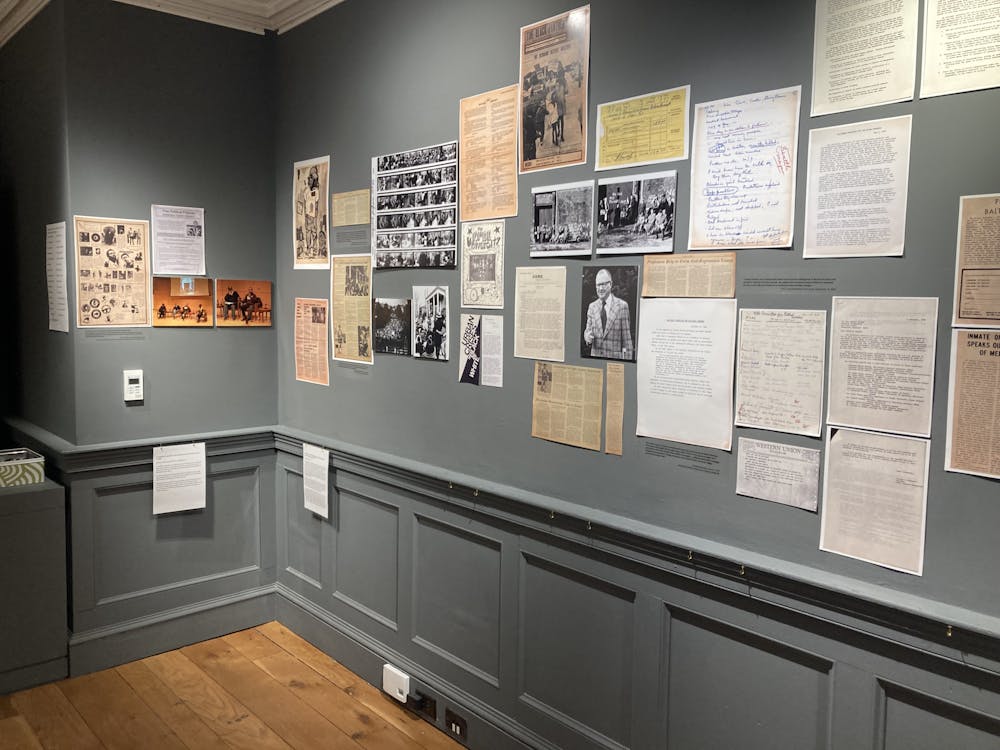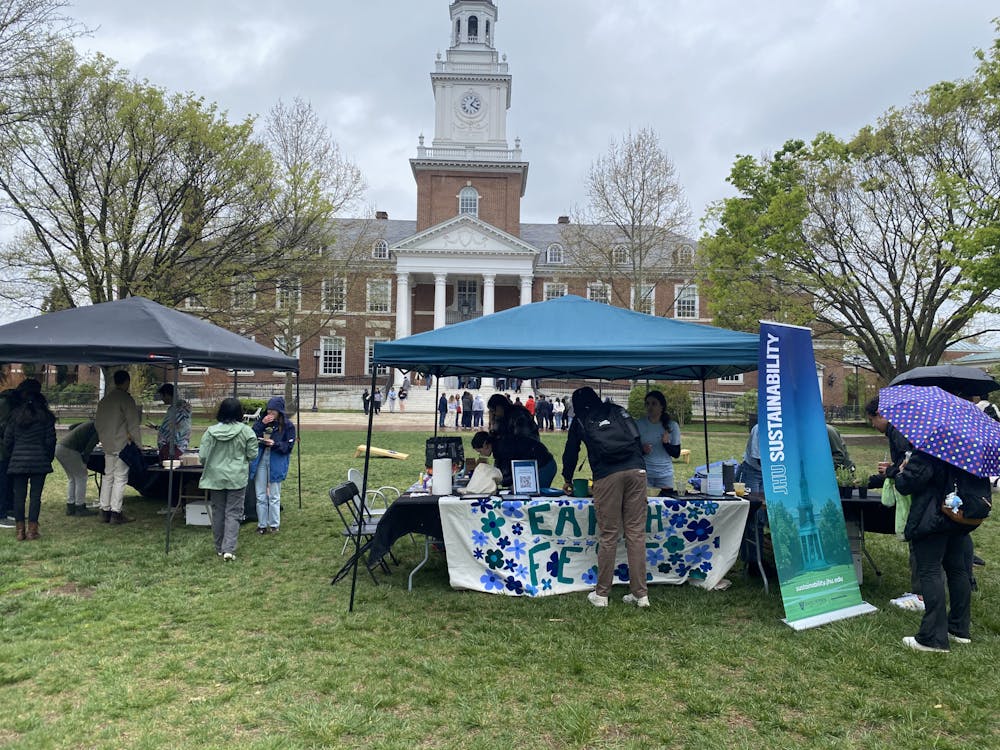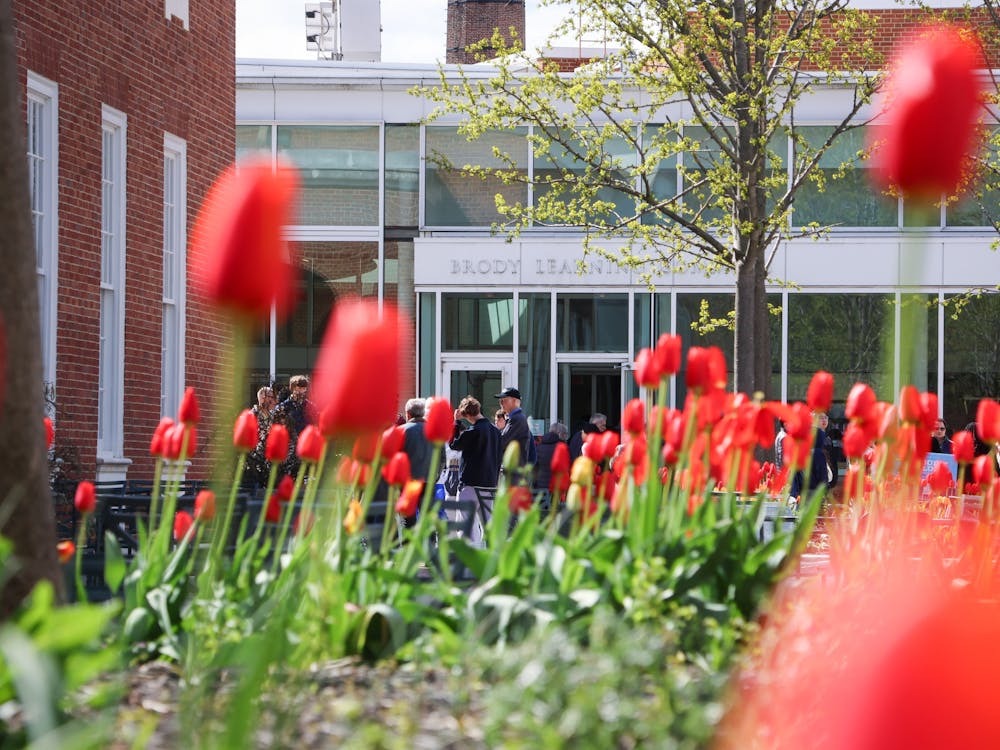The Hopkins Pantry opened its doors to all University affiliates this past week. This program, located in the Office of Multicultural Affairs (OMA), offers non-perishable food to students, staff and faculty who may be struggling to feed themselves for financial reasons.
The Pantry is open from 6 to 8 p.m. on Tuesdays and Wednesdays, and 3 to 5 p.m. on Sundays. Pantry volunteers cannot disclose information about visitors, who only need to fill out a one-time intake form which asks if they are over 18.
Hopkins alum Nemo Keller began developing the Pantry last spring after securing a grant to combat food insecurity and reduce food waste on campus. Keller also helped create the Free Food Alert, which notifies students about campus events with leftover food.
The News-Letter interviewed senior Ivory Loh and junior Emma Zeng, who both helped found the Pantry. Zeng explained that they wanted to start the program to address food insecurity at Hopkins.
“Hopkins is obviously a very academically rigorous school, so a lot of people have to put a lot of time into their studies in order to succeed, but that’s really hard to do well if you’re hungry,” she said.
Loh explained that the idea for the Pantry evolved from the Free Food Alert. To supplement the Alert, Keller thought of creating a Free Food Fridge, where food left over from campus events could be stored.
“What she found was that even after the Alert, there were still small portions of leftover waste that they would have to throw out,” Loh said.
Zeng added that the Alert aims to serve a dual purpose on campus.
“It was a food waste initiative but also tangentially reducing hunger,” she said.
However, Keller was about to graduate when she received funds from the Office of Sustainability to start the Free Food Fridge. Zeng and Loh, members of the food justice group Real Food Hopkins, stepped in to continue the project.
Last summer, the two met with administrators and worked to secure resources and organization for the Free Food Fridge. However, Zeng elaborated that she and Loh eventually needed to reassess their idea.
“Not only could we not find student monitors to monitor the fridge, but also because these are perishable goods, there were a lot of regulations around it,” Zeng said.
Loh said that she and Zeng were later invited to join the Food Insecurity Working Group, an initiative involving the Interfaith Center, the Counseling Center, the Office of Sustainability, and Housing and Dining, among others.
“This gave us an idea to have a transition in our project to focus more on food insecurity, and having food waste be in conjunction with that,” Loh said.
In focusing on food insecurity, the pair began researching programs and initiatives at other U.S. universities. They stumbled across a growing network of student-run pantries.
Loh talked about the research that went into transforming the initiative into the Hopkins Pantry. Zeng researched Columbia University’s pantry, which served as a model. She also reached out to local colleges like Towson University and the University of Baltimore.
“Towson’s initiative just started too, so it was really cool to see their take on the starting steps,” Loh said. “Both of us coming in didn’t realize food insecurity was an issue on campus.”
Students who undergo food insecurity are typically forced to prioritize buying textbooks, paying for tuition and securing transportation over buying meals.
To establish a comprehensive understanding of hunger among Hopkins affiliates, Loh and Zeng led a “labor force” of students who had studied food insecurity on campus.
“Together we all realized what we needed was preliminary, formative research, so we could determine what is the level of food insecurity on campus,” Zeng said. “We created a survey that we pushed out to students, both graduate and undergraduate.”
The survey, distributed during fall 2017, asked students whether they were skipping meals due to financial circumstances. The survey drew 509 respondents.
Only 7.5 percent of respondents identified as being food-insecure. However, 60 percent of respondents said that they knew another student who went hungry due to a lack of money.
According to the New York Times, about half of all college students in the United States struggle with food insecurity. It adds that this problem occurs even at elite institutions like the University of California, Berkeley or Northwestern University.
It adds that in New York, 30 percent of students in community college and 22 percent of those enrolled in four-year colleges suffer from food insecurity.
The Times elaborates that the risk of food insecurity is much higher for LGBTQ students, students of color and former foster youth.
Greater risk of food insecurity can be attributed to the rising cost of college education in the U.S. Tuition levels are already at their highest in history, the report reads, at odds with the declining income and wealth of most American families.
The report also says that food stamps, which are offered as a solution to food insecurity by many, often don’t work for college students because they have a minimum work requirement for the recipient, which is unrealistic for someone enrolled full-time.
Loh and Zeng believe that this discrepancy may be attributed to the stigma around hunger and lack of resources on campus.
According to Zeng, they were inspired by existing initiatives that combat food insecurity. For example, some students were able to receive meal cards. However, they said that such solutions only worked in the short-term.
The two hope to gather enough data during the spring semester to determine what the future of the project may look like.
“From that, we would say, ‘Do we continue this next year?’ If it’s a total failure, then obviously not,” Loh said. “We’re not trying to push for something that doesn’t work, we’re just trying to see if it does.”
In the first week, Zeng and Loh reported that eight students visited the Pantry, each carrying out between three and 10 items. Loh said that while she and Zeng were initially discouraged by these low numbers, they also heard that Towson University’s pantry initially had similar turnouts.
“In their first month they only had 20 visits total,” she said. “The fact that we already had eight people in this first week, I feel like it’s going to take off even more.”
Zeng attributes food insecurity on campus to the lack of financial support for low-income students at Hopkins.
“People who are facing food insecurity don’t want to talk about it,” Zeng said. “Something that the school loves to say, especially about this incoming class, is that about 10 percent were low-income, first-generation students. And it’s great that they’re getting into Hopkins, but then they don’t have the support.”
Loh added that it can be difficult to help friends struggling with food insecurity.
“You don’t want to say, ‘Here’s money,’ or ‘Let me treat you,’” she said. “The support needs to come from institutions at the whole community level.”
Loh and Zeng feel confident about the Pantry’s security as they are receiving a lot of support from the Freshman Class Council, as well as the administration.
“The Freshman Council of the Student Government Association has been a really big supporter of this initiative as well, and I think that reflects their priorities as a freshman class,” Zeng said “A lot of the groundwork was student-led.”
Loh added that although she and Zeng faced difficulties working with the administration at first, they found support from Allison Leventhal, who oversees the Food Insecurity Working Group.
“Once we were in this Food Insecurity Working Group, they were hearing our ideas, and they were really supportive and wanting to explore more about the issue,” she said.
For now, Loh and Zeng hope that the stigma about food insecurity can be changed and that more people can have conversations about hunger on campus.
“I’m hoping the Pantry establishes, ‘Here is a need. Look: We’re showing you there is a need,’” Loh said. “The Pantry’s not going to solve everything... this is not the end-all, be-all solution to hunger on campus. We want this to just be an additional support.”
While the Pantry is accepting donations, the leaders also call for greater awareness and communication.
“The most important part is just getting that knowledge, getting that conversation started,” Zeng said.
The Hopkins Pantry has an active Facebook page where people can find out more about services, hours and policy.
Assistant Director of OMA Carla Hopkins did not respond to requests for comment by press time.
















Please note All comments are eligible for publication in The News-Letter.